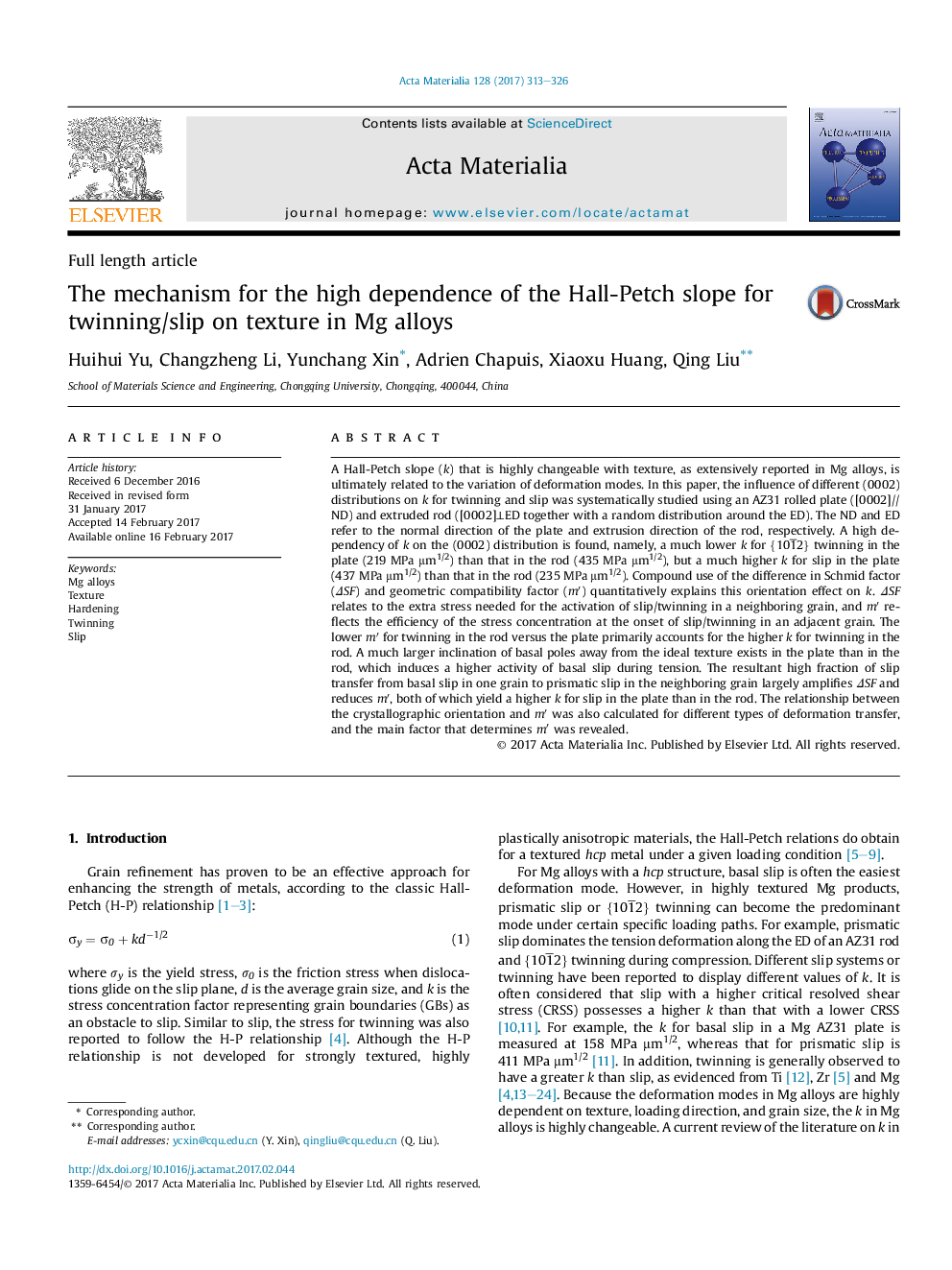| کد مقاله | کد نشریه | سال انتشار | مقاله انگلیسی | نسخه تمام متن |
|---|---|---|---|---|
| 5436285 | 1509548 | 2017 | 14 صفحه PDF | دانلود رایگان |

A Hall-Petch slope (k) that is highly changeable with texture, as extensively reported in Mg alloys, is ultimately related to the variation of deformation modes. In this paper, the influence of different (0002) distributions on k for twinning and slip was systematically studied using an AZ31 rolled plate ([0002]//ND) and extruded rod ([0002]â¥ED together with a random distribution around the ED). The ND and ED refer to the normal direction of the plate and extrusion direction of the rod, respectively. A high dependency of k on the (0002) distribution is found, namely, a much lower k for {101¯2} twinning in the plate (219 MPa μm1/2) than that in the rod (435 MPa μm1/2), but a much higher k for slip in the plate (437 MPa μm1/2) than that in the rod (235 MPa μm1/2). Compound use of the difference in Schmid factor (ÎSF) and geometric compatibility factor (mâ²) quantitatively explains this orientation effect on k. ÎSF relates to the extra stress needed for the activation of slip/twinning in a neighboring grain, and mâ² reflects the efficiency of the stress concentration at the onset of slip/twinning in an adjacent grain. The lower mâ² for twinning in the rod versus the plate primarily accounts for the higher k for twinning in the rod. A much larger inclination of basal poles away from the ideal texture exists in the plate than in the rod, which induces a higher activity of basal slip during tension. The resultant high fraction of slip transfer from basal slip in one grain to prismatic slip in the neighboring grain largely amplifies ÎSF and reduces mâ², both of which yield a higher k for slip in the plate than in the rod. The relationship between the crystallographic orientation and mâ² was also calculated for different types of deformation transfer, and the main factor that determines mâ² was revealed.
305
Journal: Acta Materialia - Volume 128, 15 April 2017, Pages 313-326